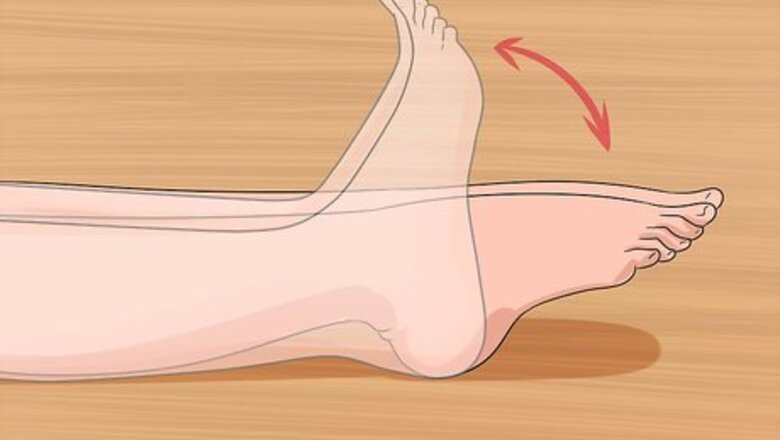
views
Employing Natural Remedies
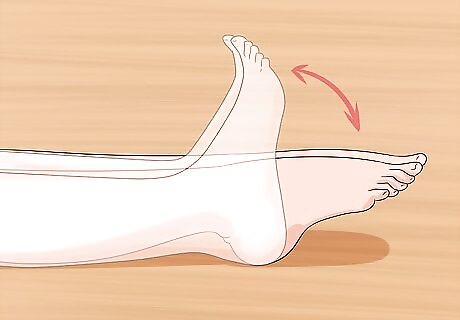
Try foot exercises. Exercises can help slow or even halt the progression of your bunion, preventing the need to eventually get surgery. Try the following exercises every day, especially after removing your shoes: Stretch your big toe. Use your fingers to pull your big toe into proper alignment with the rest of your toes. Stretch the rest of your toes. Simply point them straight ahead for 10 seconds, then curl them under for 10 seconds. Repeat several times. Flex your toes. Press your toes against the floor or a wall until they are bent back. Hold them for 10 seconds, then release. Repeat several times. Grip with your toes. Practice picking up an article of clothing or a towel with your toes, dropping it, then picking it up again.
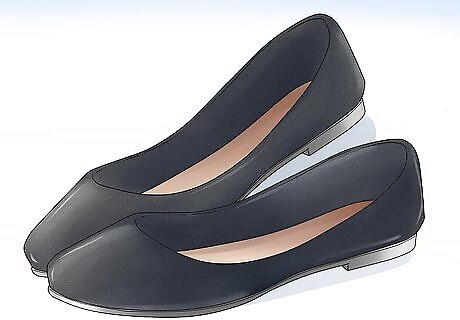
Wear low-heeled shoes of the appropriate width for your feet. Ask a consultant at the shoe store to measure the size of your feet. They can tell you what width is right for you to ensure your shoes fit properly. Then, select lower styles to avoid the pressure that causes bunions. Bunions are caused by a genetic abnormality in your foot where the first long bone shifts inward. However, this can be aggravated and accelerated by things like wearing tight shoes or heels.

Wear a bunion pad or shoe inserts to realign toes. If you catch your bunion in the early stages, a bunion pad purchased at any pharmacy or drugstore may help to alleviate pain and direct your toe back to the proper direction. Shoe inserts may also help to realign your toes when you are wearing shoes. You can use either prefabricated inserts or a custom orthotic that's fit by a foot specialist. Also, consider using inserts to provide your shoes with adequate arch support. If your arch collapses, your bunion will get better over time.
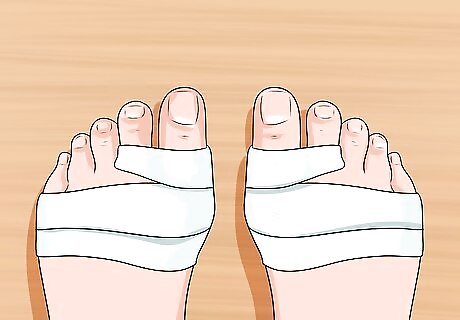
Tape your foot and toes into a normal alignment position. Your toes may adapt to the normal position after being taped for a week or two. Ask your doctor if you need assistance with this process.

Relieve the pain. Exercising your feet and toes is well and good, but the intense pain bunions cause should also be addressed. Ease sore feet using the following methods: Soak your feet in warm water. Prepare a bowl with warm water and allow your feet to soak for twenty minutes. The warmth will sooth your joints and temporarily alleviate the pain. Try an ice pack. For particularly bad flare-ups, ice packs are a good choice. Fill a plastic bag with ice and wrap it in a thin towel. Apply the ice pack in twenty-minute increments several times a day. Take nonsteroidal anti-inflammatory drugs (NSAIDs), such as ibuprofen, to relieve the pain.

Wear bunion splints at night. Try bunion splints to push your toes back into the proper alignment for greater comfort. You can buy these at your local shoe or orthotics store.
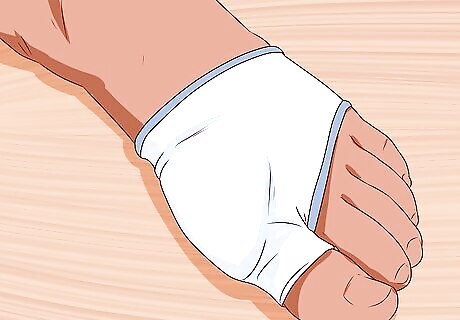
Try a bunion split. For mild to moderate bunions, a flexible bunion splint such as "Bunion-Aid" has been scientifically proven to effectively correct Hallux valgus and relieve bunion pain.
Treating Severe Bunions

Consult a physician. If you are experiencing extreme pain that seems to be getting worse, or if your feet no longer fit in your shoes, consult a physician right away. It's possible to slow or halt the progression of bunions, but you can't actually cure them on your own.
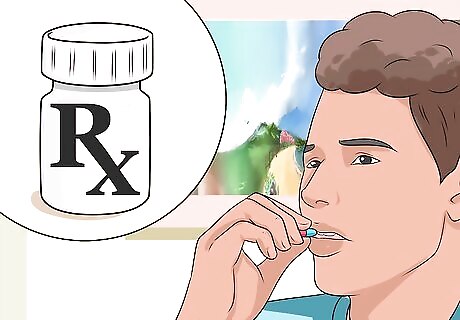
Take prescribed pain medication. In some cases the doctor will advise you as to lifestyle changes and prescribe a medication for the pain. To prevent the bunion from getting worse, be sure to follow the doctor's advice.
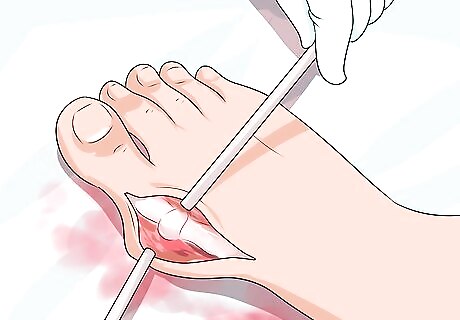
Consider surgery. Talk to your doctor about surgery if your bunion pain is severe and symptoms do not improve with other therapies. The surgeon will surgeon shave the bone of your big toe and realign your big toe with the other toes. Bunion surgery is common and considered to be the only cure for bunions. There are several options for a bunionectomy surgery. Conduct research with your doctor to find out which option is best for you. Surgery usually helps bunions, but it doesn't guarantee that you will be completely free of pain, or that your toe will look perfectly straight. Follow up the surgery with proper lifestyle changes and exercises to prevent future pain and inflammation. Surgery has potential pitfalls, such as wound infection, recurrence of the bunion or decreased sensation in your big toe, so it's often considered a last resort.#*You can use either prefabricated inserts or a custom orthotic that's fit by a foot specialist. Your doctor can discuss these potential complications with you, so you can make an informed decision.
Making Lifestyle Changes
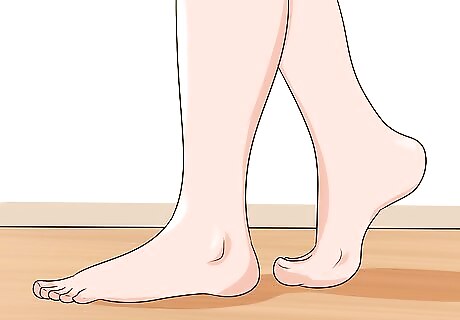
Go barefoot. Whether you inherited a propensity toward getting bunions from one of your parents or your bunions are the result of a lifetime of wearing shoes that are too tight, spending as much time as possible walking barefoot can prevent and even heal bunions. Walking barefoot strengthens the muscles in your feet and helps the bones realign in their natural position, rather than having to conform to the shape of your shoes. However, if your bunions are advanced and very painful, walking barefoot can make them feel worse. If this is the case, only walk barefoot on thickly carpeted floors. Otherwise, wear padded socks when you're walking around the house and doing your daily activities. Wearing thick, comfortable slippers around the house is another option to help ease the pain of your bunions without subjecting your feet to the pressure of wearing shoes.
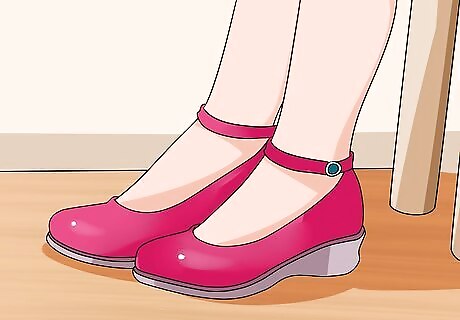
See if your shoes are making your bunions worse. You may think they are comfortable and good for your feet, but even tennis shoes and other athletic shoes could be making your bunions worse. Wear supportive shoes with good padding and arches. If you're in doubt about what type of shoe to buy, ask your doctor for advice. Make sure that your shoes are the right size for you. Wearing shoes that are too small can make bunions a lot worse. When you're trying on shoes, your big toe should never touch the end of your shoe. To ensure you get the most comfortable fit, try on your shoes at the end of the day, when your feet are the most swollen. Also, use a brannock device to measure your feet each time you buy shoes, because your shoe size can change over time. Don't wear high heels or pointy toes. They're pretty, but heels and stylish pointy-toed shoes are terrible for bunions. They lead to additional pain and prevent the bunion from healing. Wear less restrictive sandals whenever possible.
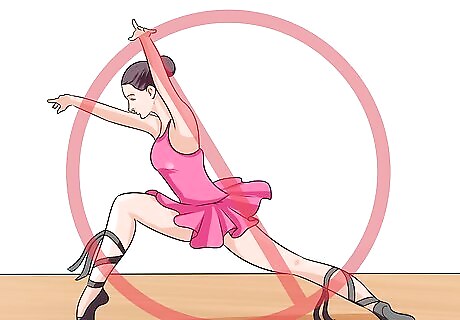
Avoid activities that lead to bunions. Ballet dancing, and other activities requiring constrictive shoes, may lead to bunions. If it isn't possible to do the activity in shoes that are healthier for your feet, avoid the activity altogether.















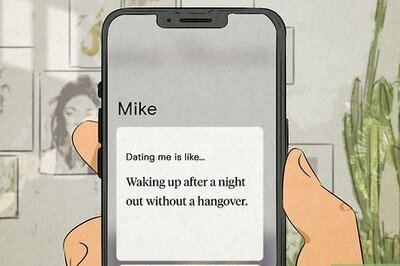

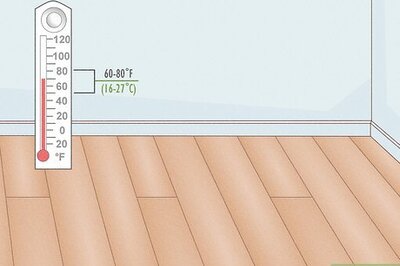

Comments
0 comment